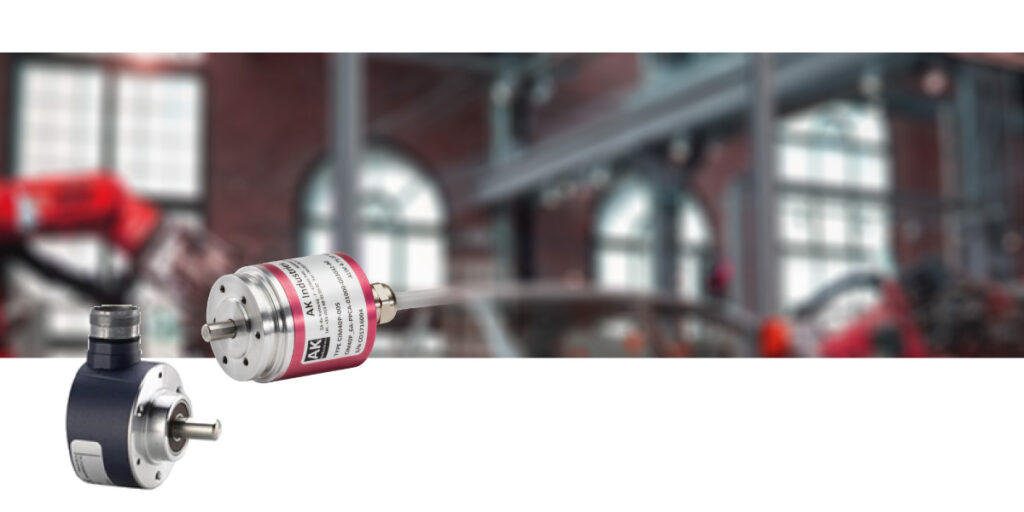ROTARY OPTICAL AND MAGNETIC ENCODERS
Rotary encoders are used to control the angular displacement and positioning of a rotating moving part (shaft, axle, etc.).
The principle of optical encoders is based on the presence of a slotted plate (or alternating transparent and opaque patterns) mounted on the encoder shaft, which rotates between a LED and a phototransistor (light detector). There’s a relation between the number of light pulses (due to the rotation of the plate driven by the rotating element) and the angular position/speed of this moving element. With their very high resolution, optical encoders are appreciated in precision robotics and in measuring instruments dedicated to automation.
The principle behind magnetic encoders is based on the mounting of a magnet on the encoder’s shaft, whose magnetic force variations during rotation (linked to the drive by the rotating mobile) are sensed by a magnetic force detector. These variations are converted into signals that determine the angular position/displacement of the rotating element. Thanks to their robustness, magnetic encoders are especially effective in harsh industrial environments (machine tools, worksite machinery, etc.).











